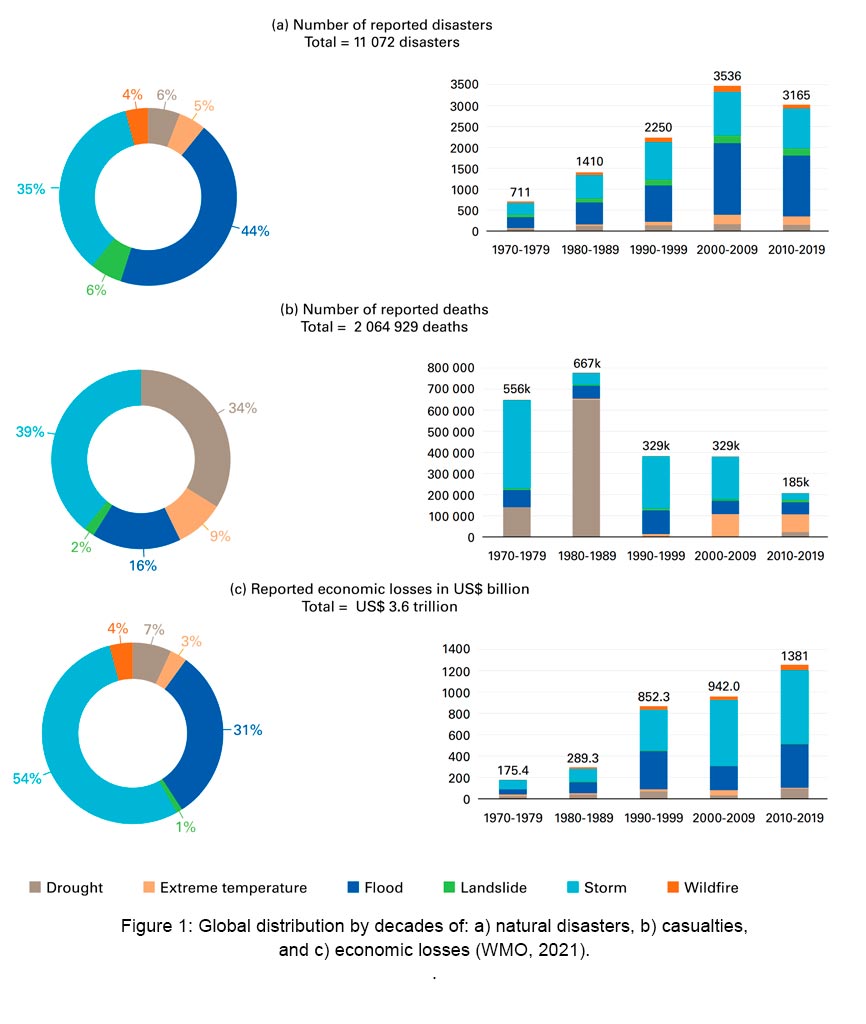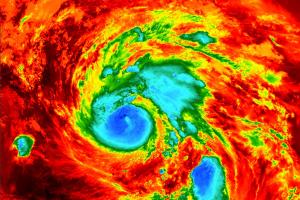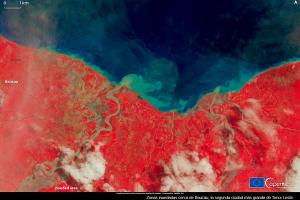National and regional governments, local authorities and communities, water corporations, and scientists must collaborate urgently to enhance flood prevention, warning, coordination, and emergency management tools at the local level in disaster risk reduction programs. The necessity for immediate action became obvious following the flooding events that occurred around the world in 2021. Many people worldwide have been affected by an increased risk of heavy rainfall and flooding.
A series of heavy rainfalls in a short period of time caused flash floods in countries like Indonesia, Mexico, Colombia, USA, Spain, India, Thailand, South Sudan, New Zealand, Ghana, Myanmar, France, Spain, Sudan, Japan, Turkey, China and Haiti in August and early September of 2021. These are just a few examples. In most countries affected by flooding, damage to transportation infrastructure (bridges and roads) has left many people isolated, aside from significant economic losses. Summer storms in July 2021 brought heavy rain and flooding to much of Europe. Flooding has occurred in more than 135 sites around the continent, with 40 severe and minor floods being reported. Worldwide, flooding disasters have been reported in the first half of 2021 as well. According to FloodList almost every country in the world has experienced at least one flood event so far in 2021.
According to Berghuijs et al. (2017), who looked at data from 1980 to 2009, floods have become more intense and frequent over time in Europe and North America. A report of the World Meteorological Organization (WMO) informs that from 1970 to 2019 weather-related disasters have grown by five times. This rise, however, is accountable for more economic losses but fewer casualties. Figure 1 and Figure 2 depict the global and European distribution by decade of natural disasters and their related human and economic losses as reported by WMO in the Atlas of Mortality and Economic Losses from Weather, Climate and Water Extremes (1970 – 2019) (WMO, 2021). A recent research (Blöschl et al., 2019) discovered a rise in flood discharges in northern Europe and a declining tendency in most stream gauges in southern and eastern Europe. However, it is difficult to determine if floods are becoming more intense and/or frequent worldwide (IPCC, 2014, Sharma et al., 2018), even though the damages due to flooding and intense precipitation have significantly increased worldwide (Kunkel et al., 2013)

The research conducted by the CRED: Centre for Research on the Epidemiology of Catastrophes (Wallemacq and House, 2018), indicates that flood disasters accounted for more than 43 percent of all disasters registered/reported between 1998 and 2017. Flooding occurrences accounted for 23% (US$ 656 billion) of economic damages and impacted 45 percent (2 billion) of people affected by natural disasters in the time period studied. Flooding events were responsible for 11% of all natural hazards deaths documented.

The majority of the 2021 floods had severe consequences, including the deaths of hundreds of people. In Europe, AA-Floods aims on implementing improved/new flood risk management and response techniques, strategies, and regulations at the local scale in the Atlantic Area to reduce the impacts of future floods as climate change increases the frequency and/or intensity of such events.
References
- BERGHUIJS, W. R., AALBERS, E. E., LARSEN, J. R., TRANCOSO, R. & WOODS, R. A. 2017. Recent changes in extreme floods across multiple continents. Environmental Research Letters, 12, 114035.
- BLÖSCHL, G., HALL, J., VIGLIONE, A., PERDIGÃO, R. A., PARAJKA, J., MERZ, B., LUN, D., ARHEIMER, B., ARONICA, G. T. & BILIBASHI, A. 2019. Changing climate both increases and decreases European river floods. Nature, 573, 108-111.
- IPCC 2014. Climate change 2013: the physical science basis: Working Group I contribution to the Fifth assessment report of the Intergovernmental Panel on Climate Change. Cambridge university press.
- KUNKEL, K. E., KARL, T. R., BROOKS, H., KOSSIN, J., LAWRIMORE, J. H., ARNDT, D., BOSART, L., CHANGNON, D., CUTTER, S. L. & DOESKEN, N. 2013. Monitoring and understanding trends in extreme storms: State of knowledge. Bulletin of the American Meteorological Society, 94, 499-514.
- SHARMA, A., WASKO, C. & LETTENMAIER, D. P. 2018. If precipitation extremes are increasing, why aren’t floods? Water Resources Research, 54, 8545-8551.
- WMO 2021. The Atlas of Mortality and Economic Losses from Weather, Climate and Water Extremes (1970–2019). World Meteorological Organization.
- https://floodlist.com/
- https://public.wmo.int/en/media/press-release/weather-related-disasters-increase-over-past-50-years-causing-more-damage-fewer






